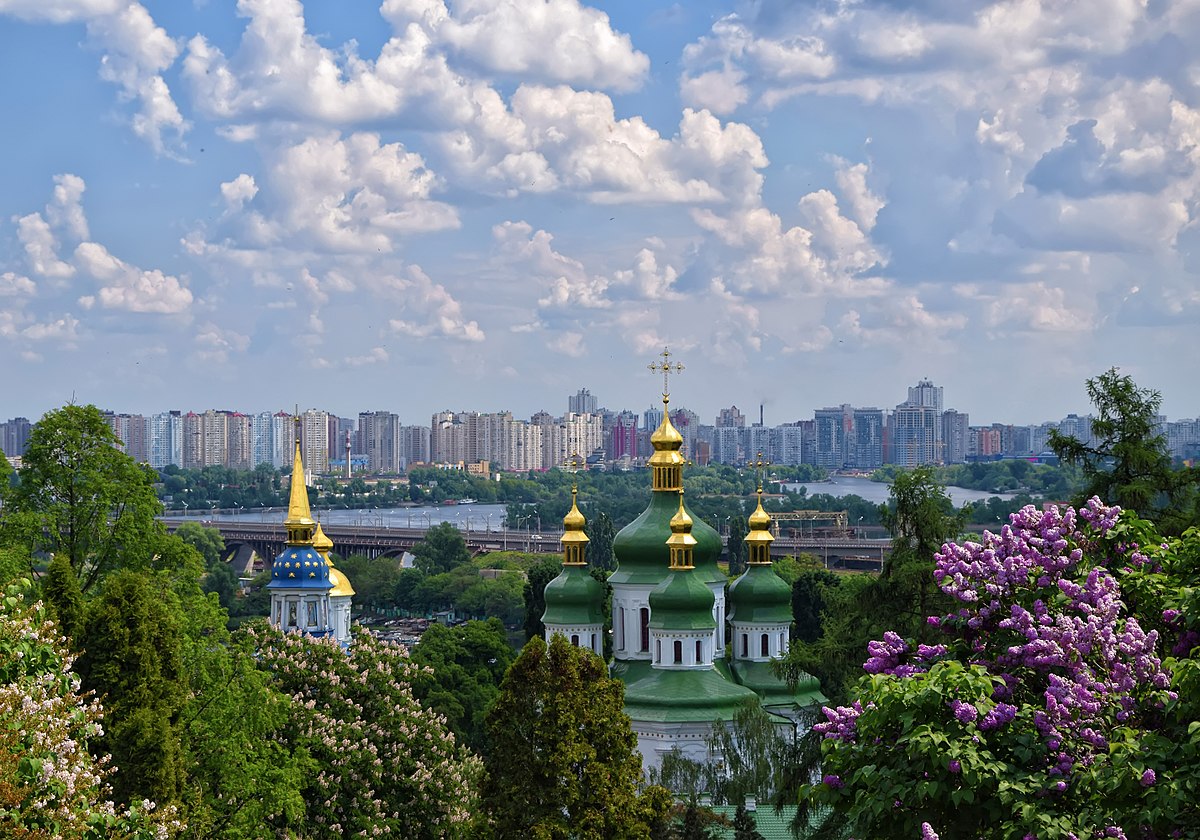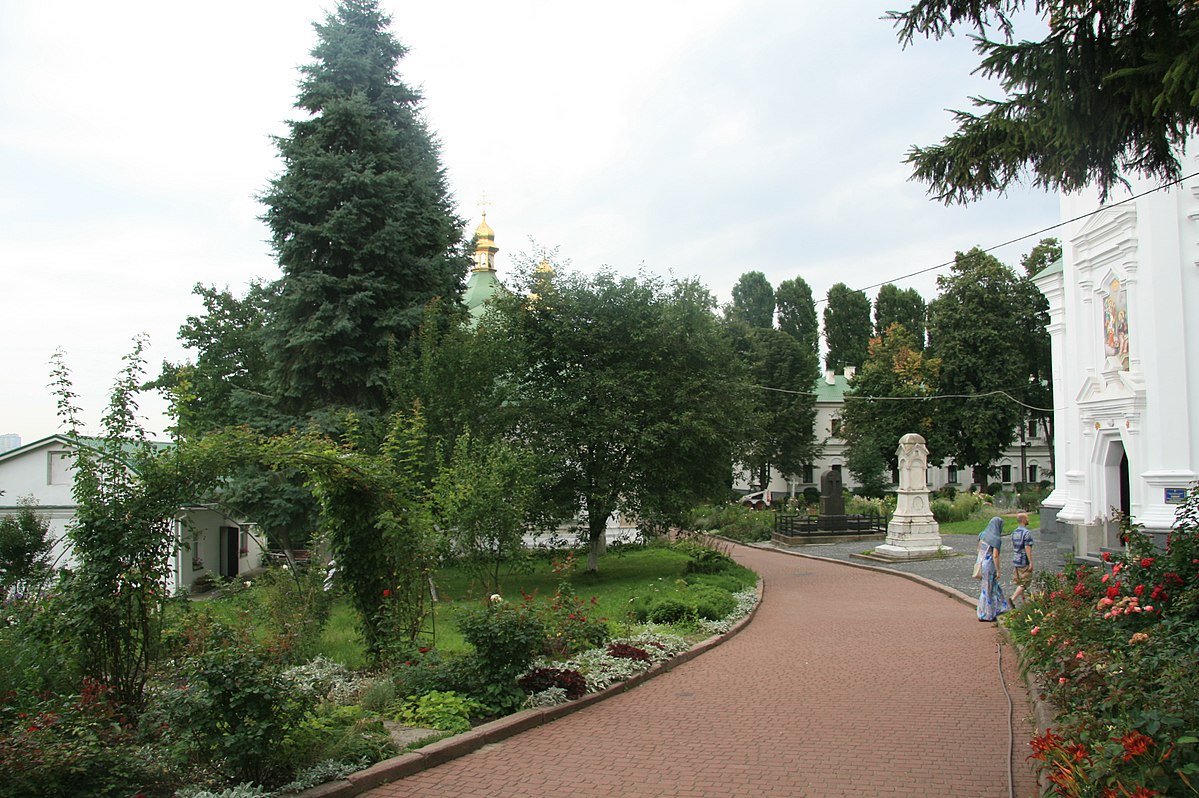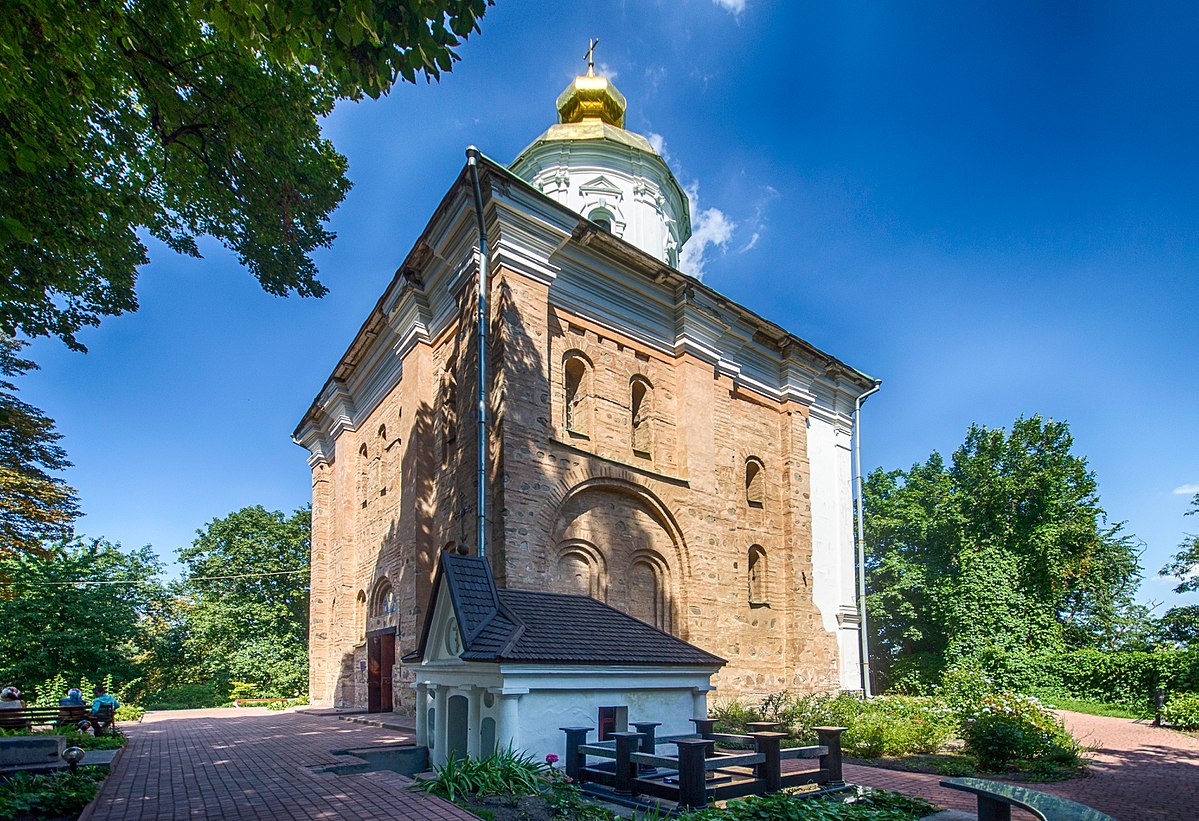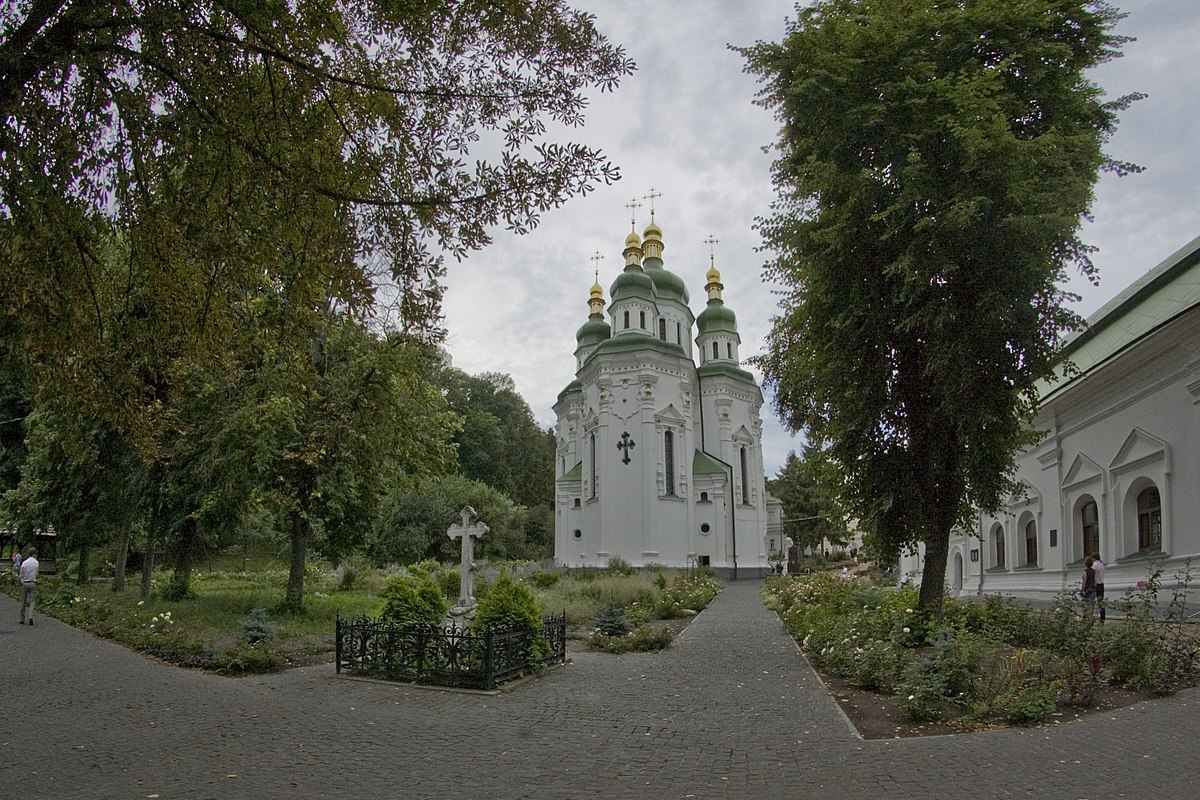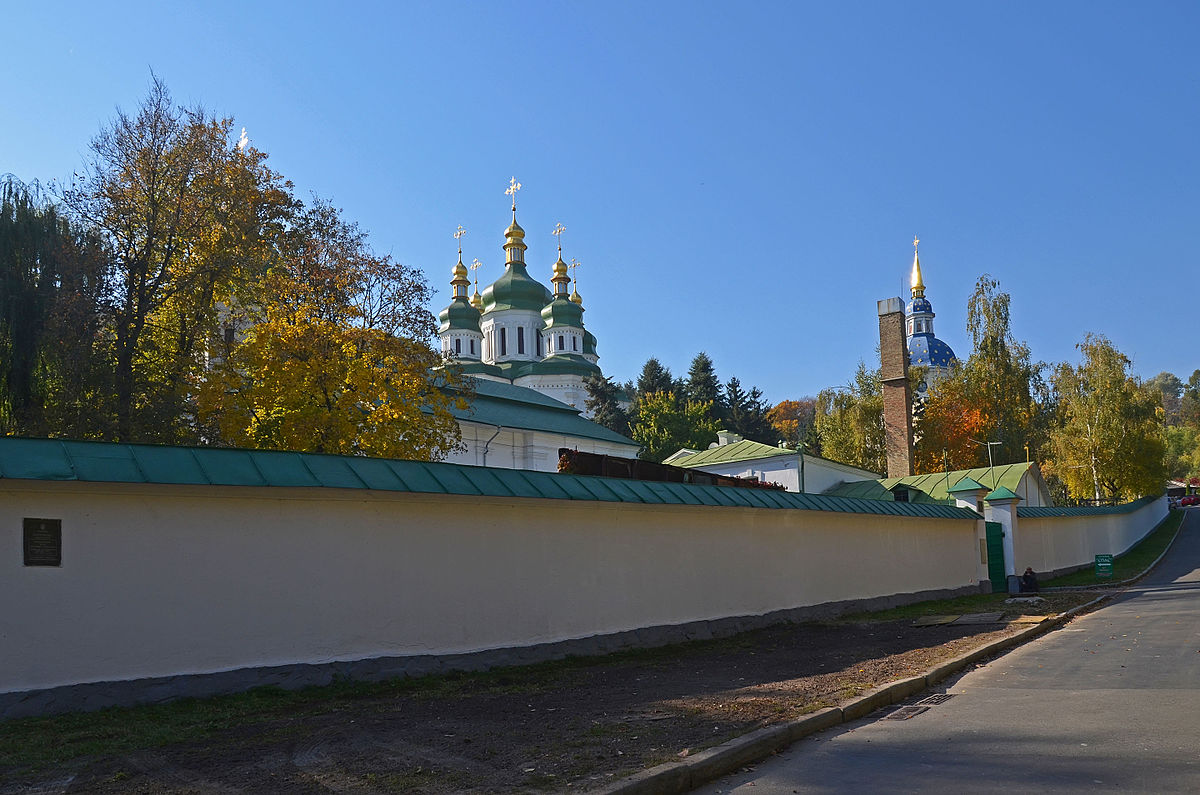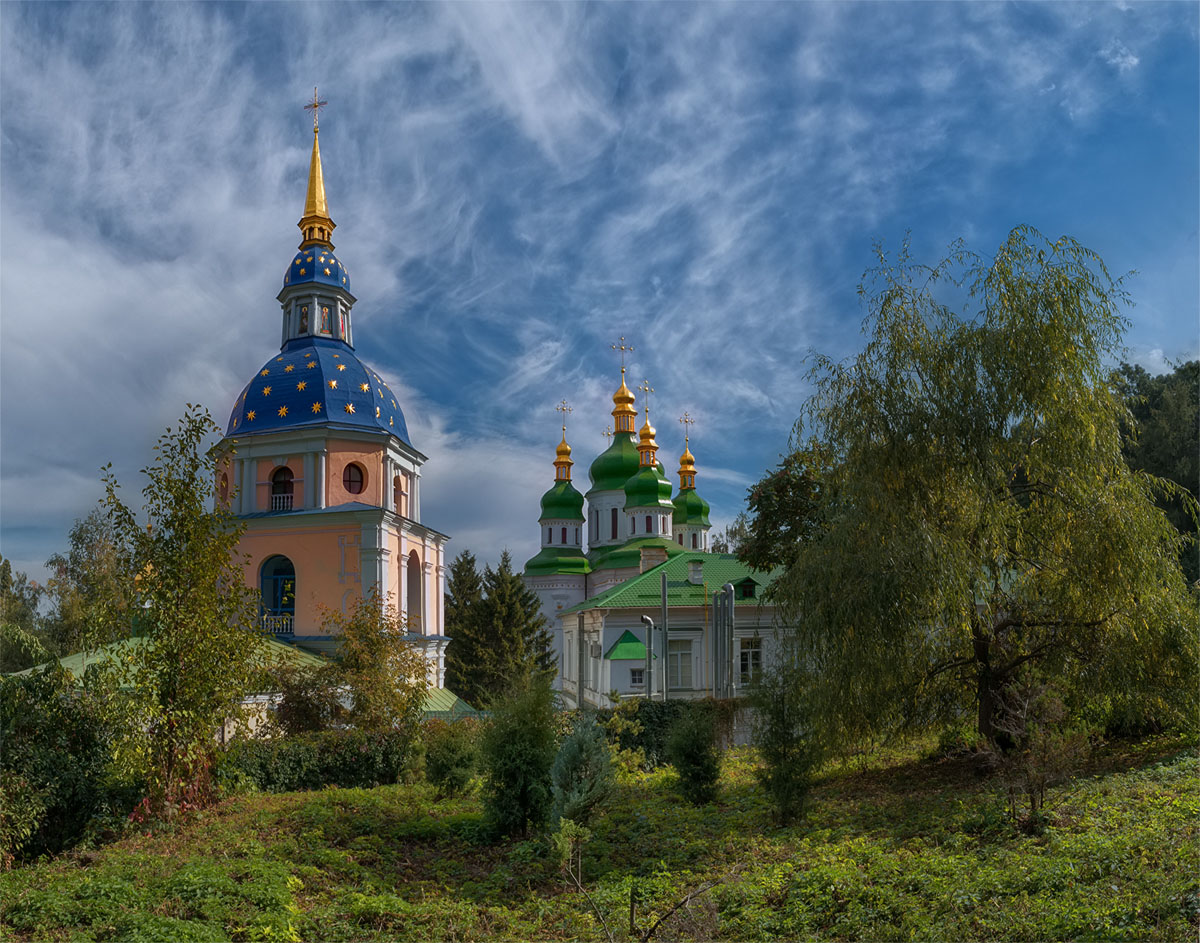The Vydubitsky Monastery is one of the most ancient monasteries in Kyiv, along with the Kiev Pechersk Lavra. It was founded around 1077 by the son of Yaroslav the Wise, Vsevolod Yaroslavich. The monastery itself and the adjacent area of Vydubychi take their name from the old legend about Vladimir the Baptist and the defeated pagan god Perun. The legend tells how Prince Vladimir Svyatoslavich, on the day when he decided to baptize Rus’, ordered all the wooden idols of Perun and other gods to be thrown into the Dnieper River. Laypeople devoted to the ancient faith ran along the river and called on the gods to show up and swim out, shouting “Peruna, blow it out!” The place where the idols finally floated ashore was called Vydubychi. At least that’s what the legend tells us. But one point raises great doubt – how could the very difficult idol of Perun with an iron helmet on his head swim from the mouth of the Pochayna through the stormy Dnieper rapids for more than 5 kilometers and then swim ashore?…
Another version of the origin of the name of the Vydubitsky Monastery is from the crossing. It is certainly known that even before the Baptism of Rus’, there was a crossing over the Dnieper River in the area of the monastery. The laity crossed on “oaks” – the so-called boats, hollowed out from solid oak trunks. Nearby, in the Vydubitsky tract, there was a large oak forest. Also, the name Vydubychi could have been given by an underground monastery that existed before the Baptism of Rus’ on the territory of Zverinetsky caves, which after the official the adoption of Christianity “knocked out” from the ground and occupied the territory of a pagan temple on the shore near the crossing, which later became a ferry. There is no exact information, but according to rumors, the legendary “Library of Yaroslav the Wise” could have been partially stored in the Zverinetsky caves, the very fact of whose existence, however, is in great doubt.
The Vydubitsky monastery was the family monastery of the Monomakhovichs. In the first century of its existence, the monastery became the center of the secular and political life of Kyiv and the princely court. The princes held negotiations here, gathered their army and prayed before going on campaigns. Many learned monks lived and worked in the monastery. Among them were Sylvester and Moses, who made a major contribution to the writing of The Tale of Bygone Years. The Red Court, the residence of the wife of Yaroslav the Wise, was built next to the monastery.
This is interesting!
In the Vydubitsky Monastery there is a necropolis where many outstanding scientists, artists and public figures, mainly from the 19th century, are buried. Taras Shevchenko wanted to be buried here, since, according to many of his contemporaries, this place was mentioned in his poem “Testament”. But he was a disgraced poet, so the city authorities did not allow him to be buried within the boundaries of Kyiv and in its environs. Fortunately, quite detailed sketches of the monastery of the 19th century, made by the hand of the great Ukrainian poet, have reached us.
At the end of the Kyiv principality, the monastery survived the invasions of Batu’s army and the army of Andrei Bogolyubsky, and burned several times. Stories about the Zverinetsky caves, where the Vydubitsky monks lived before the adoption of Christianity, were considered fiction for a very long time, but the caves themselves were accidentally discovered in 1888. During the exploration of the caves, about 30 mummies were found, which, judging by their poses, died from dehydration and lack of air. Most likely, during the attack on the Vydubitsky monastery, the monks fled to the caves, where they planned to wait out the invasion, but there they were walled up alive.
The first buildings of the monastery were wooden and have not survived to this day. And only a few of the churches of the Vydubitsky Monastery can be seen now. One of them is the Church of the Archangel Michael, built under Vsevolod. A cross-domed church with three chapels, built using the recessed row technique. The church and the hill on which it stood began to be washed away by the Dnieper, and for the safety of the building, the city authorities built a retaining wall, designed at the end of the 12th century by the court architect Milonegos. However, in the 16th century, half of St. Michael’s Church (the dome and the entire altar part) nevertheless collapsed into the Dnieper along with the Mylonega retaining wall. The church was reconstructed only in 1769 – in the Ukrainian Baroque style.
Since the end of the 17th century, the monastery acquired several magnificent stone buildings: the five-domed St. George Church in the Cossack Baroque style, the Spasskaya Church, a refectory and a bell tower were built here. Like most religious buildings during the Soviet era, the Vydubitsky Monastery was not used for its intended purpose – until the mid-90s, the Institute of Archeology of the Academy of Sciences of Ukraine was located on the territory of the monastery.
The Vydubitsky Monastery is actually located on the territory of the Grishko Botanical Garden. The monastery is active and belongs to the UOC-KP. Now there is a blacksmith shop, an apiary, a pottery workshop, a grapevine weaving workshop, as well as a small rehabilitation center for drug addicts. There are art salons.
Where is the Vydubitsky Monastery?
Vydubitskaya street 40
Phone: 0442853581
